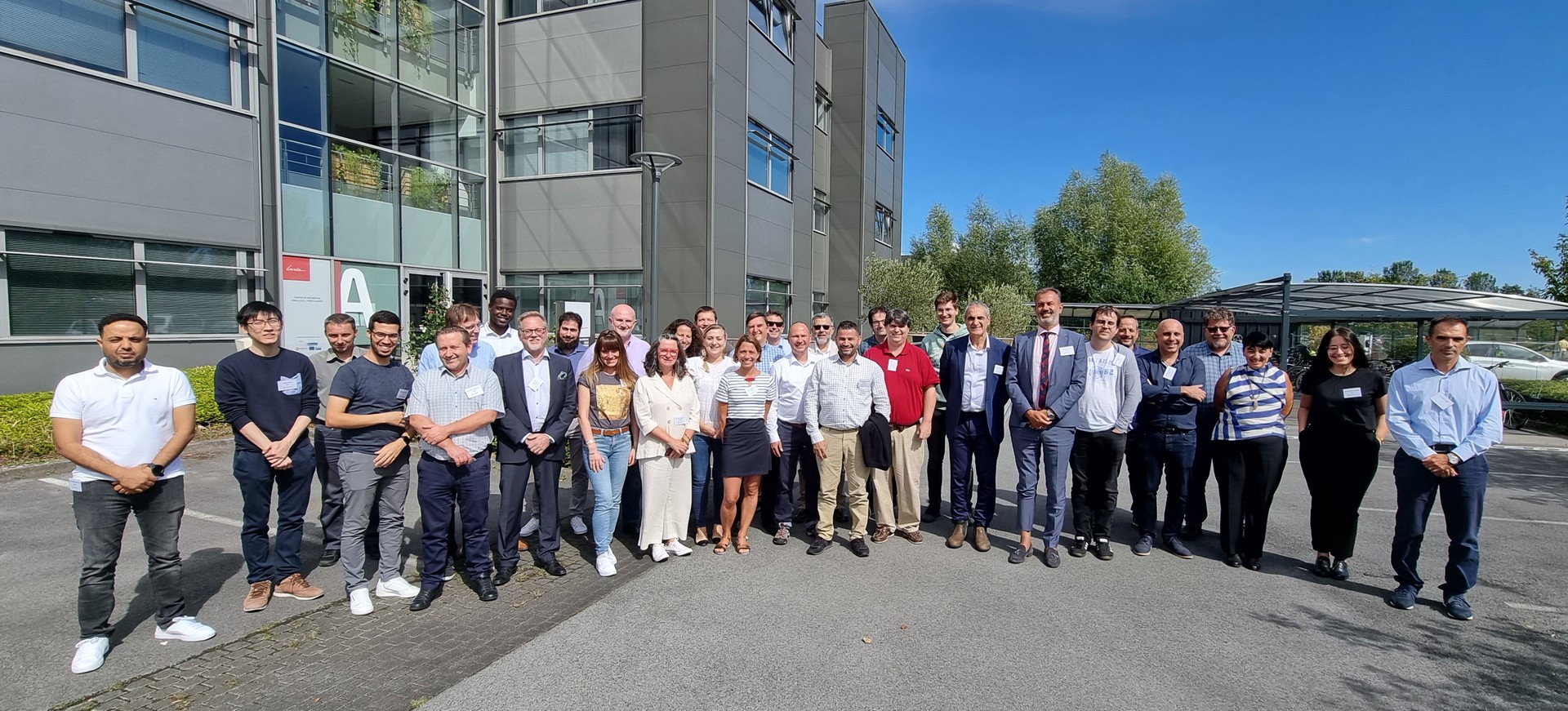SLICES, the first European platform dedicated to digital sciences
Date:
Changed on 21/12/2022

SLICES (Scientific Large-Scale Infrastructure for Computing/Communication Experimental Studies) is an ambitious scientific project coordinated by Inria with the support of Sorbonne University. Nathalie Mitton, head of the FUN project team at the Inria centre at the University of Lille and coordinator of the project, explains the issues involved.
As its acronym suggests, this European collaboration aims to develop a large-scale infrastructure for experimental research on various aspects of the Internet of Things (IoT), distributed systems, the Cloud, next-generation telecommunications networks (5G/6G), and high-performance computing (HPC).
The SLICES project has been approved by the European Strategy Forum on Research Infrastructures (ESFRI), whose objective is to provide Europe with infrastructures that enable innovative and effective research. Involving 15 European countries to date, it is fully in line with the ESFRI roadmap, which identifies European priorities for investment in research infrastructures, in particular integrated and interconnected ones, and encourages the participation of European states in the development of these infrastructures.
Networking, digital, and distributed computing technologies are evolving very rapidly and must satisfy many constraints: for example, for the Internet of Things, computing efficiently, with the minimum of computational resources and optimising energy consumption. These technologies use a wide variety of solutions, proposed by a large ecosystem, and encompassing issues of communication, networking, management, and data intelligence.
In order to meet these innovation challenges, scientists are making extensive use of experimentation to test new systems and architectures. SLICES aims to provide them with the resources to design, experiment, operate, and automate the full lifecycle management of digital infrastructure, data, applications, and services, and to ensure the reliability and reproducibility of their experimental results.
SLICES is the heir to two French projects, FIT (Future Internet of Things) et Grid’5000. The first, financed by the ANR (National Research Agency) and benefiting from PIA (Programme d'investissements d'avenir) funds, was led for ten years by Serge Fdida from Sorbonne University. FIT supported the setting up of an infrastructure open to large-scale experimentation of wireless and sensor-based communication systems.
As part of this project, the FUN team participated in the development of FIT's platform dedicated to the IoT. The second, led by Frédéric Desprez of Inria, was launched in 2005. Supported by a scientific interest grouping (GIS) hosted by Inria and including CNRS, Renater and several universities as well as other organisations, it led to the creation of a national platform for large-scale experimentation in intensive computing and distributed systems.
The merger of these two projects in 2016 led to the development of the national platform
Le rapprochement de ces deux projets en 2016 a permis de développer la plateforme nationale SILECS, intended for research and industrial players. SLICES is the continuation of this at the European level. A distinction must be made between the research infrastructure, SLICES-RI (for Research Infrastructure), and the projects that accompany it. The first two projects, SLICES-DS (for Design Studies) and SLICES-SC (for Starting Community) have the respective objectives of conducting the initial design studies for the platform and structuring the scientific community of interest around the project.
Started in September 2020, SLICES-DS ended in August 2022, leaving room for SLICES-PP (for Preparation Phase), which began in September 2022. Atypical in many respects, as it has many dimensions - technical, scientific, economic and political - and involves a large number of partners, the project relies on a plural management: the coordination is ensured by myself (Nathalie Mitton) with my colleague Christian Perez, member of the Avalon team at the Inria centre in Lyon and Solenne Fortun, member of the Rainbow Rainbow team at the Inria centre of the University of Rennes, who assumes the functions of project leader.
As the objectives of SLICES-PP are multiple, the project is organised into different tasks. First, the technical and functional requirements are specified, followed by the definition of policies and decision-making processes for the governance of SLICES-RI - in particular the legal and financial frameworks, the governance model, the required human resource capacities, and the training program. The General Assembly of partners has just endorsed the status of ERIC - an entity established by a decision of the European Commission and with a legal personality and capacity recognised by all EU countries.
Other SLICES-PP tasks include proposing the consolidated technical architecture of the platform and the principles of data governance (production, protection, distribution, etc.), as well as defining the scientific guidelines for future developments. Finally, the project aims to obtain the commitment of the Member States and stakeholders on the funding necessary for the platform's operation.
SLICES-RI is set to become an effective instrument for supporting high-level research and high-tech industry at the European level, and to contribute to industrial competitiveness and the societal impact of digital technology.
Responding to the needs of its future users, scientists from the academic world or from the industrial sector linked to research, this future research infrastructure can also be used for teaching and training purposes.
SLICES-RI is the first platform dedicated to digital sciences and has been awarded ESFRI certification. It will operate for several decades, in conjunction with other international platforms of the same type, and will be designed to integrate future digital innovations.